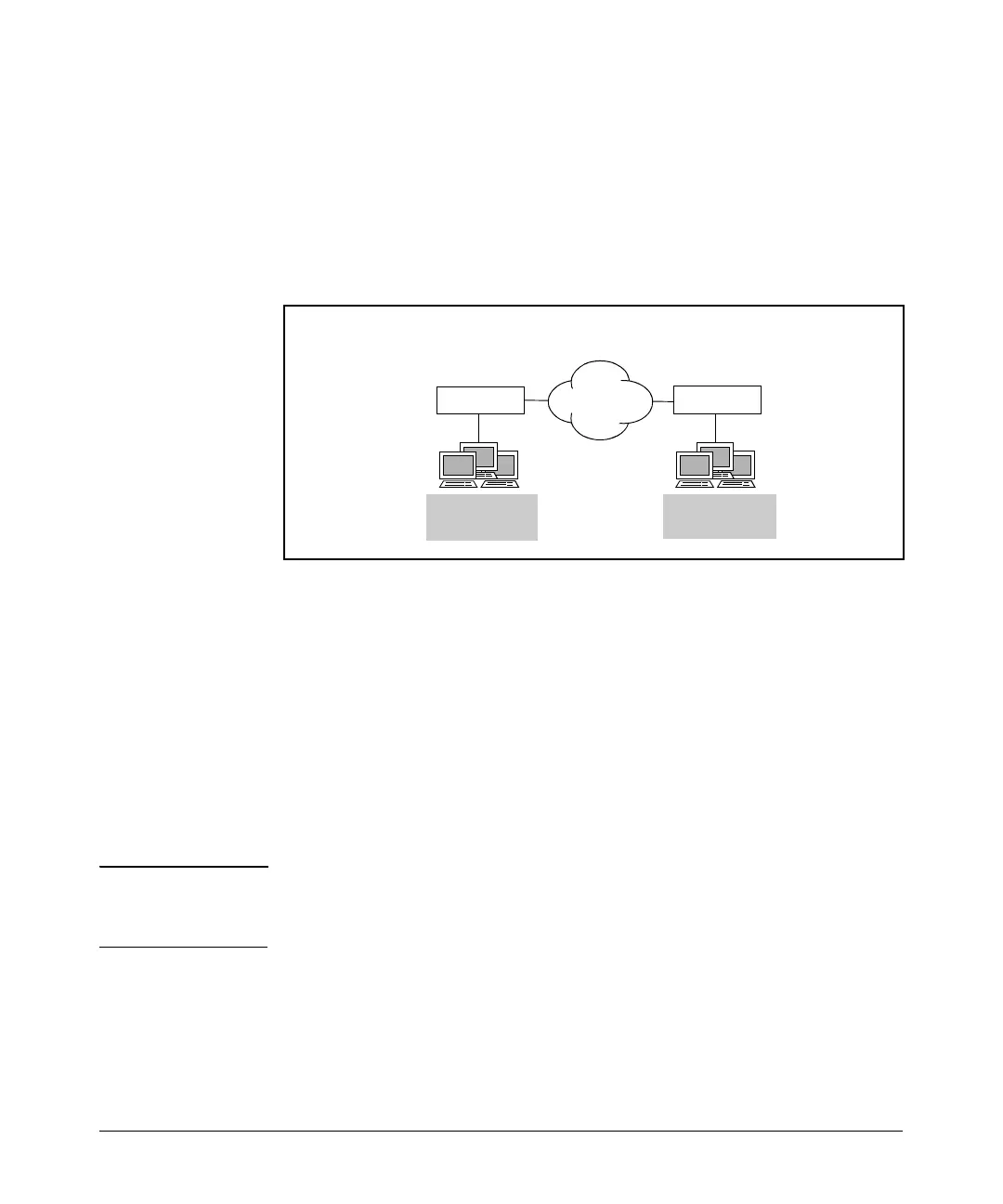10-8
Bridging—Transmitting Non-IP Traffic or Merging Two Networks
Configuring Bridging
Rather than use the router as a bridge in this situation, you could use variable-
length subnetting to divide the network into two subnets. This solution works
when the sites include contiguous, evenly divided addresses. For example, in
Figure 10-3 an organization uses network 192.168.1.0 /24. Site A uses addresses
192.168.1.1 through 192.168.1.127 and Site B uses addresses 192.168.1.128
through 192.168.1.254. You could divide the subnet into subnets 192.168.1.0 /
25 and 192.168.1.128 /25.
Figure 10-3. Variable-Length Subnetting
Viewing the Bridge Table
The ProCurve Secure Router stores information about how to forward bridged
packets in a bridge table. To view the bridge table, move to the enable mode
context and enter:
Syntax: show bridge <group number>
For example:
ProCurve# show bridge 1
Note You must either enter show commands from the enable mode context or add
do to the command. For example, to view the bridge table from the global
configuration mode context, you would enter do show bridge.
The bridge table contains MAC addresses for hosts in the bridged network and
the interface through which the router connects to these hosts. It also displays
the age of the entry and the number of frames transmitted to and received
from the host. (See Figure 10-4.)
192.168.1.128 -
192.168.1.254
Router A
Site A
192.168.1.0 /25
Router B
192.168.1.1 -
192.168.1.127
Site B
192.168.1.128 /25
